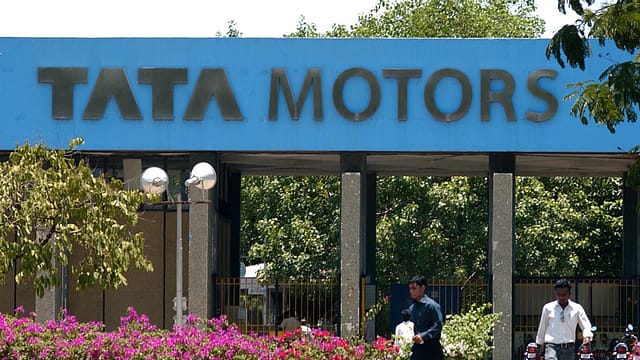How Tata Motors plans to reclaim 50% market share in EVs
ADVERTISEMENT

Tata Motors , India’s largest electric car maker, is seeing stiff competition from rivals—JSW MG Motor India and Mahindra & Mahindra (M&M) —in the country’s tiny electric vehicle market.
The carmaker, which accounted for over two-thirds of EV sales in the financial year 2023-24, has seen its market share slide to around a third in the first quarter of FY26. During the same time, China’s SAIC Motor-backed JSW MG Motor India has more than doubled its market share to 28% while M&M has quadrupled its share to over 20%.
Yet, Tata Motors is confident of reclaiming at least 50% market share in EVs in the medium to long term on the back of two new EV launches in the full-size SUV segment: the recently launched Harrier EV and the soon-to-be-launched Sierra EV.
“We were not present in the higher EV segment, which is garnering strong demand. This has frankly been a surprise to us that in this kind of price segment, there is so much demand,” says Shailesh Chandra, managing director of Tata Motors Passenger Vehicles and Tata Passenger Electric Mobility.
Most barriers to electrification are overcome in the full-size segment, says Chandra. EVs in this segment are priced on par with the automatic version of their ICE variant because of a high duty structure, he says. EVs attract 5% Goods and Services Tax (GST) while ICE cars in this segment are taxed at 48% compared with 28% GST for entry-level cars.
December 2025
The annual Fortune 500 India list, the definitive compendium of corporate performance, is out. This year, the cumulative revenue of the Fortune 500 India companies has breached $2 trillion for the first time. Plus, find out which are the Best B-schools in India.
“This segment has also been able to overcome barriers such as charging speed, range anxiety, as compared to other sub-segments. This is where we are going to position the two new products,” says Chandra. “Within this year, we will see a significant recovery of what we had lost (market share),” he adds.
'Short-term decline not a worry'
Even as several new entrants enter the EV race, Chandra is not worried about the decline in Tata Motors’ EV market share in the short term. “This is a point in time where there are multiple launches. These products are at the peak level of their demand which will stabilise later on. Our focus is to sustain a 50% market share in the mid to long term,” he says.
On rising competition, Chandra says Tata Motors does not want to be the sole player in the market. “The market will never expand otherwise," he says.
EVs account for just 2% of India’s 4 million car sales annually. “In such s small market of 12,000 vehicles per month, one product can swing your market share significantly,” says Chandra.
Part of the reason why Tata Motors saw a decline in its EV market share last fiscal was due to the discontinuation of subsidies for fleet operators. "We sustained volumes in the personal segment but lost in the fleet segment," says Chandra.
To win back fleet customers in the absence of any subsidy, Tata Motors plans to enhance the value proposition for such customers by bringing down prices. “There is something underway which will make it on par with CNG from a value proposition perspective. So far it (EV) was seen as better than diesel but inferior to CNG. That is the work which we are doing. All this should help us with a steady market share of 50%.”
However, Chandra acknowledges that barriers to EV adoption still exist in the entry segment, where Tata Motors offers products like the hatchback Tiago EV and compact SUV Punch EV.
These products have yet to overcome barriers of electrification, such as higher upfront price and range anxiety. “There are residual barriers in this segment. This is where we have to really expand the market for enhancing our market share and that will come by overcoming some of the barriers which we have not addressed. This is a segment where EVs are still seen as a city car. There is a plan to see how between the two products we play on price and value and overcome some of these barriers,” Chandra says, adding that the carmaker will do certain "interventions" to overcome these barriers.
“There is further work that we need to do in the entry segment: further cost reduction which will help us to come to a reasonable level of delivering value to the customer in terms of the right balance in features, range and price,” he says.
Tata Motors is eyeing 30% of its total passenger vehicle sales to come from EVs by 2030. And this target could become an uphill climb without affordable EVs that offer stress-free range amid sparse public charging infrastructure.
